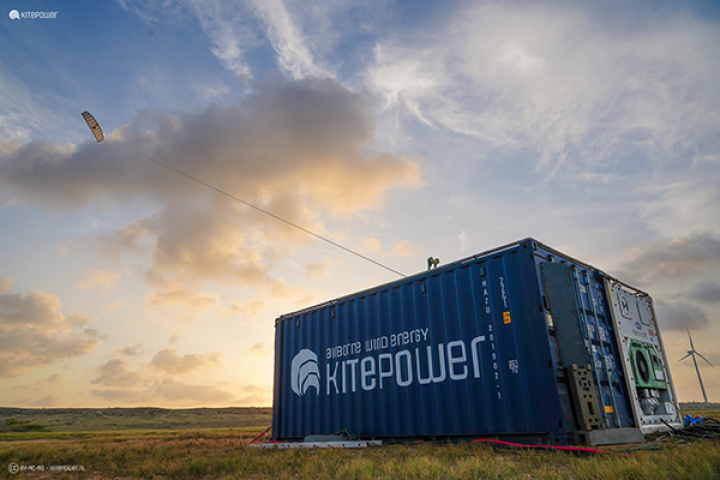Kites to generate electricity

Reducing dependence on fossil fuels in remote areas
And it works! Following a five-year collaboration with the Dutch Ministry of Defence and TU Delft, its first model of a mobile Airborne Wind Energy System (AWES) has been successfully deployed on the Dutch Caribbean island of Aruba. It is capable of producing 100 kW per year, enough to power 150 homes. For more remote and isolated locations, such as Aruba and other small islands, but also for mines, offshore oil rigs and hard-to-reach infrastructure, it could make a real difference.
High-performance materials for a mobile and durable system
Called the Falcon 100kW, the system consists of a ground station, a cable and a control unit that is connected to the kite's wing. The 60m² kite generates kinetic energy as it flies - by being pulled and released - and the ground station converts this energy into electricity.
The control unit allows the kite to be steered remotely, with or without a pulling force, during its flight, both in the power generation phase and in the power consumption phase. During the power generation phase, the kite will move in a figure of 8 pattern, flying crosswise. This phase will rotate the cable which will provide a pulling force, acting on the generator to produce electricity. This is followed by the power consumption phase, which consumes less power than that generated, which begins when the cable has reached its maximum length; the power is used to wind up the cable and bring the kite back to its initial position. The 4 mm diameter line is made of Dyneema, a high-performance polyethylene fibre (UHMWPE), seven times lighter than steel, but just as strong.
The wing has inflatable air chambers, similar to the sails used in kiteboarding. It is made of nylon and Dacron, textile fibres used for backpacks and camping equipment. The latest generations of these kites also contain carbon composite fibre reinforcements.
Making a significant contribution to reducing global CO2 emissions
This technology has multiple benefits. Flying wind energy generators can rise up to 600 metres above the ground and can capture much stronger and more consistent winds at different altitudes, whereas traditional wind turbine blades are limited to a maximum height of 150 metres. Wind energy can be produced almost 24 hours a day, even in rain or other difficult conditions.
The device itself also makes considerable savings in terms of materials, since, according to Kitepower, its construction requires 90% less material than a conventional wind turbine for the same power output. It also takes up very little space on the ground, not much more than a shipping container, so it is a very discreet visual presence.
This solution is ideal for isolated communities where conventional wind farms are not feasible due to cost or issues with transporting materials. It is easy to install, mobile, uses low-cost materials and could allow remote areas to strengthen their electricity grids with cheaper renewable energy, while helping to accelerate the energy transition.
More information:
https://thekitepower.com




